Abstract
Undergraduates participated in two experiments to develop methods for the experimental analysis of self-reports about behavior. The target behavior was the choice response in a delayed-matching-to-sample task in which monetary reinforcement was contingent upon both speed and accuracy of the choice. In Experiment 1, the temporal portion of the contingency was manipulated within each session, and the presence and absence of feedback about reinforcement was manipulated across sessions. As the time limits became stricter, target response speeds increased, but accuracy and reinforcement rates decreased. When feedback was withheld, further reductions in speed and reinforcement occurred, but only at the strictest time limit. Thus, the procedures were successful in producing systematic variation in the speed, accuracy, and reinforcement of the target behavior. Experiment 2 was designed to assess the influence of these characteristics on self-reports. In self-report conditions, each target response was followed by a computer-generated query: “Did you earn points?” The subject reported by pressing “Yes” or “No” buttons, with the sole consequence of advancing the session. In some cases, feedback about reinforcement of the target response followed the reports; in other cases it was withheld. Self-reports were less accurate when the target responses occurred under greater time pressure. When feedback was withheld, the speed of the target response influenced reports, in that the probability of a “Yes” report increased directly with the speed of accurate target responses. In addition, imposing the self-report procedure disrupted target performance by reducing response speeds at the strictest time limit. These results allow investigation of issues in both behavioral and cognitive psychology. More important, the overall order in the data suggests promise for the experimental analysis of self-reports by human subjects.
Keywords: self-reports, verbal behavior, stimulus control, temporal contingencies, feedback, delayed matching to sample, response speed, button press, humans
Full text
PDF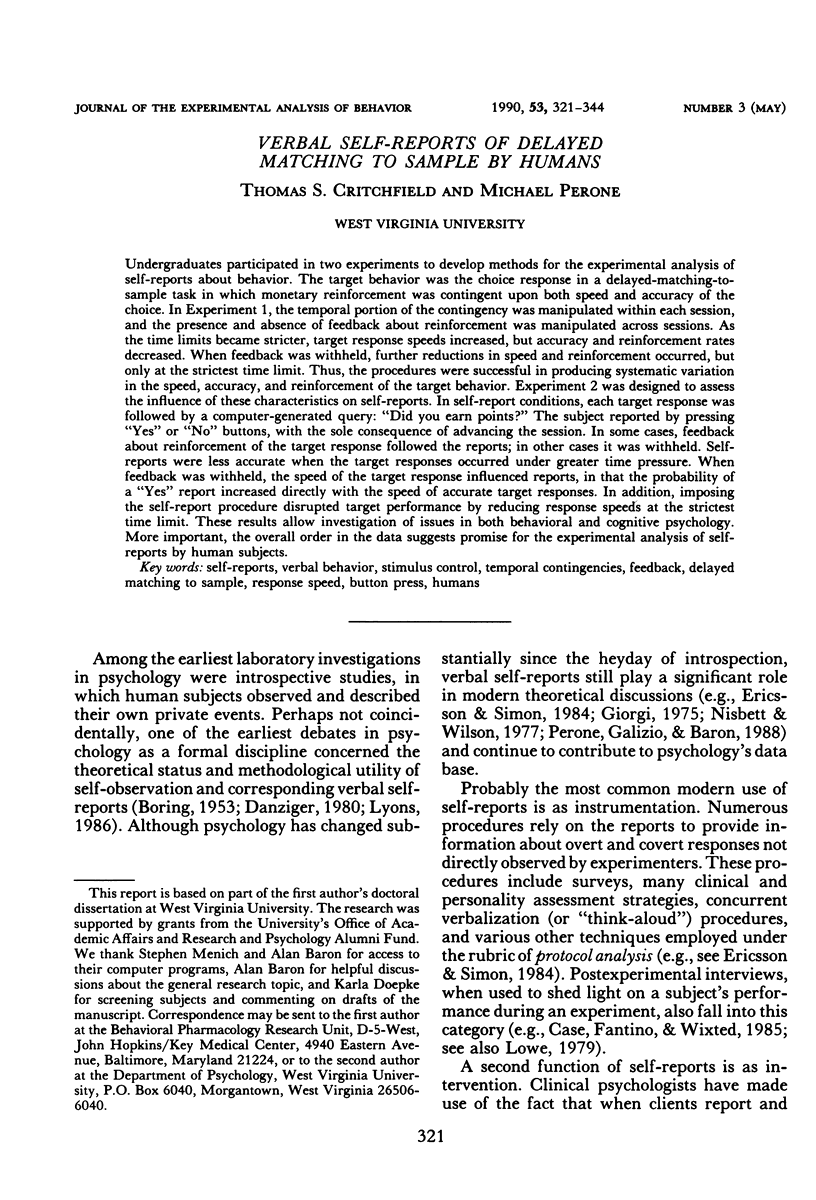
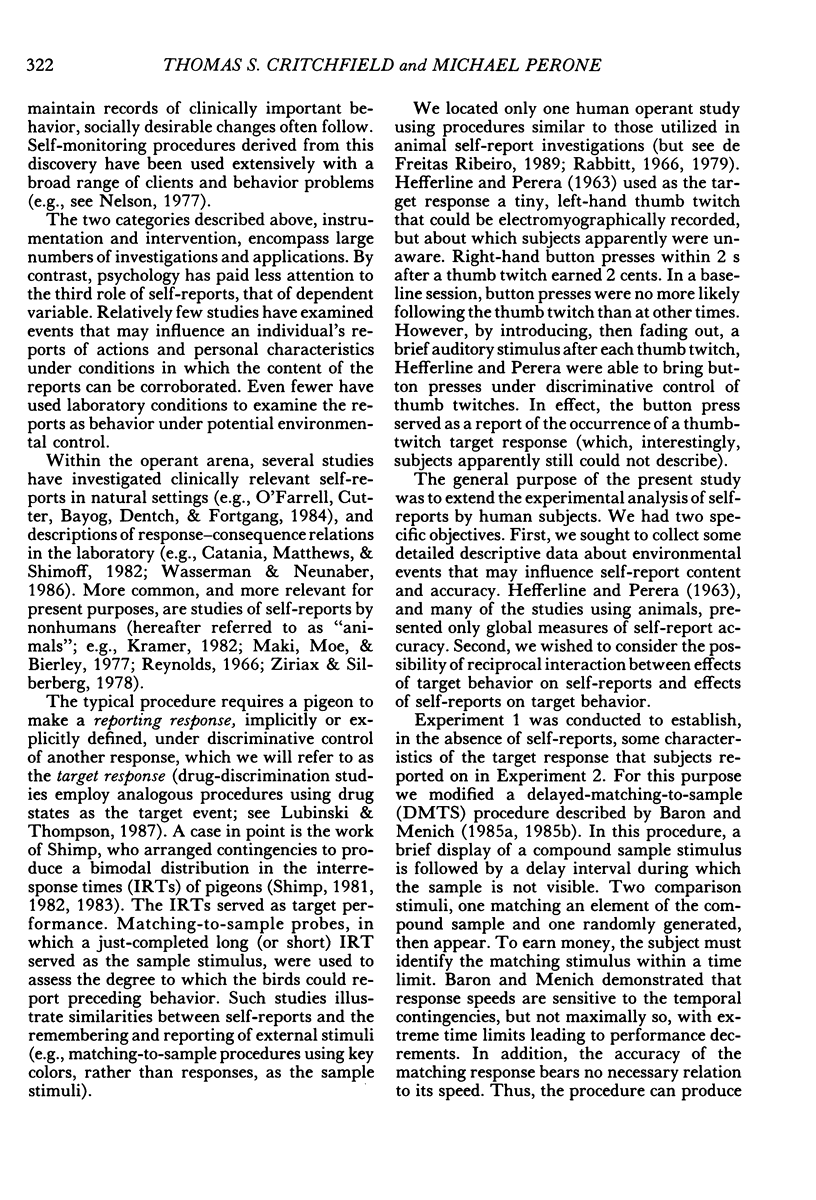

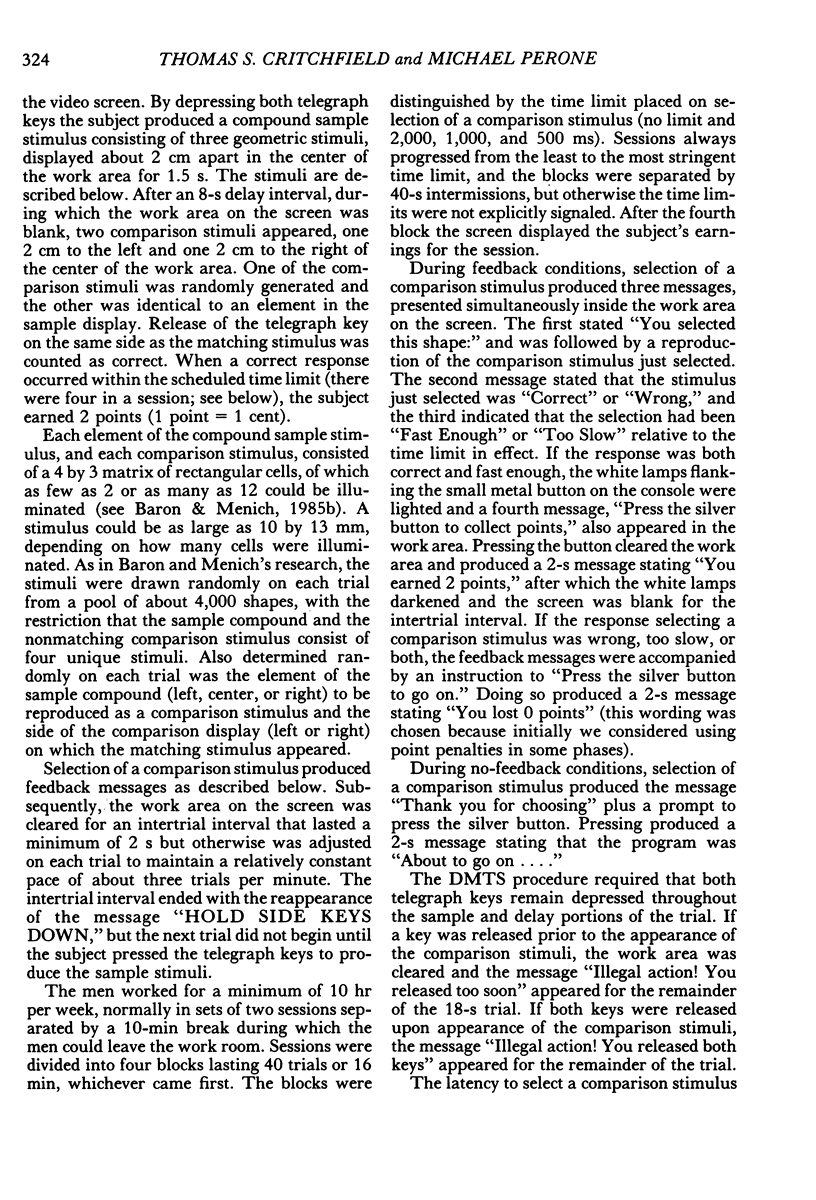
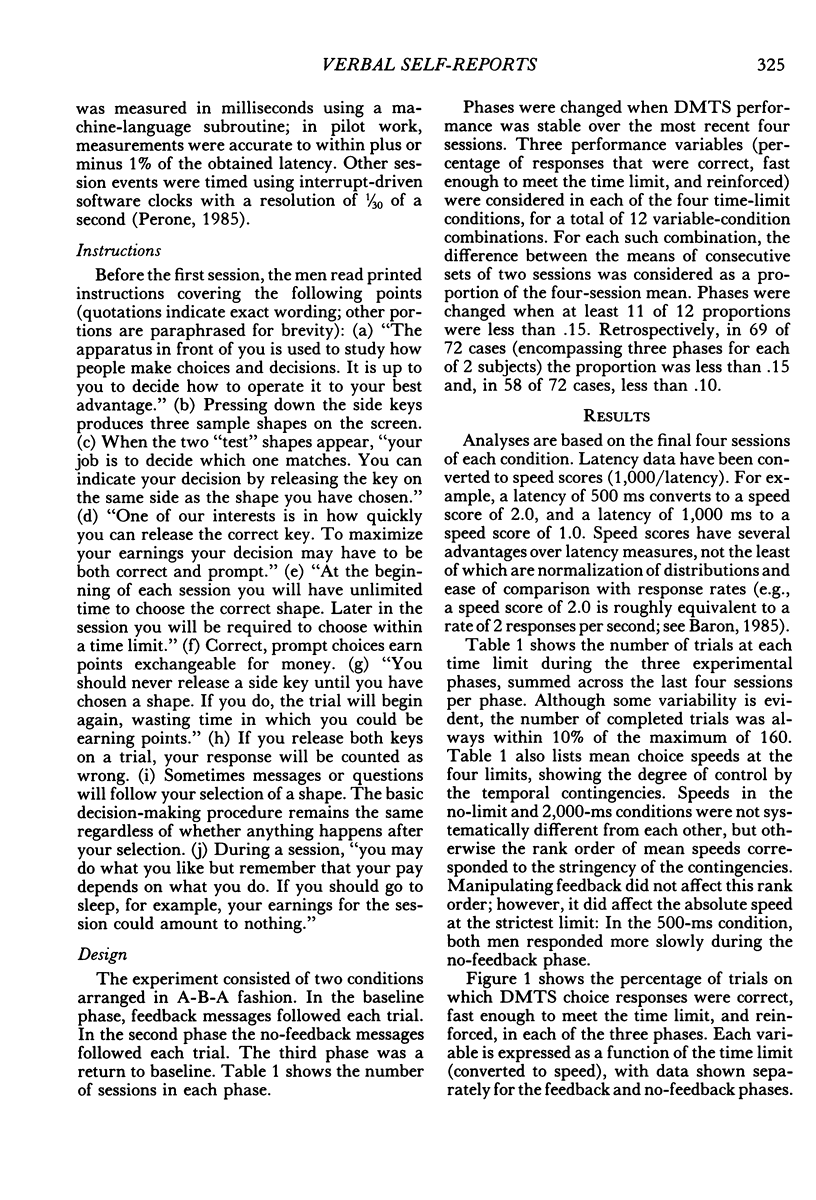
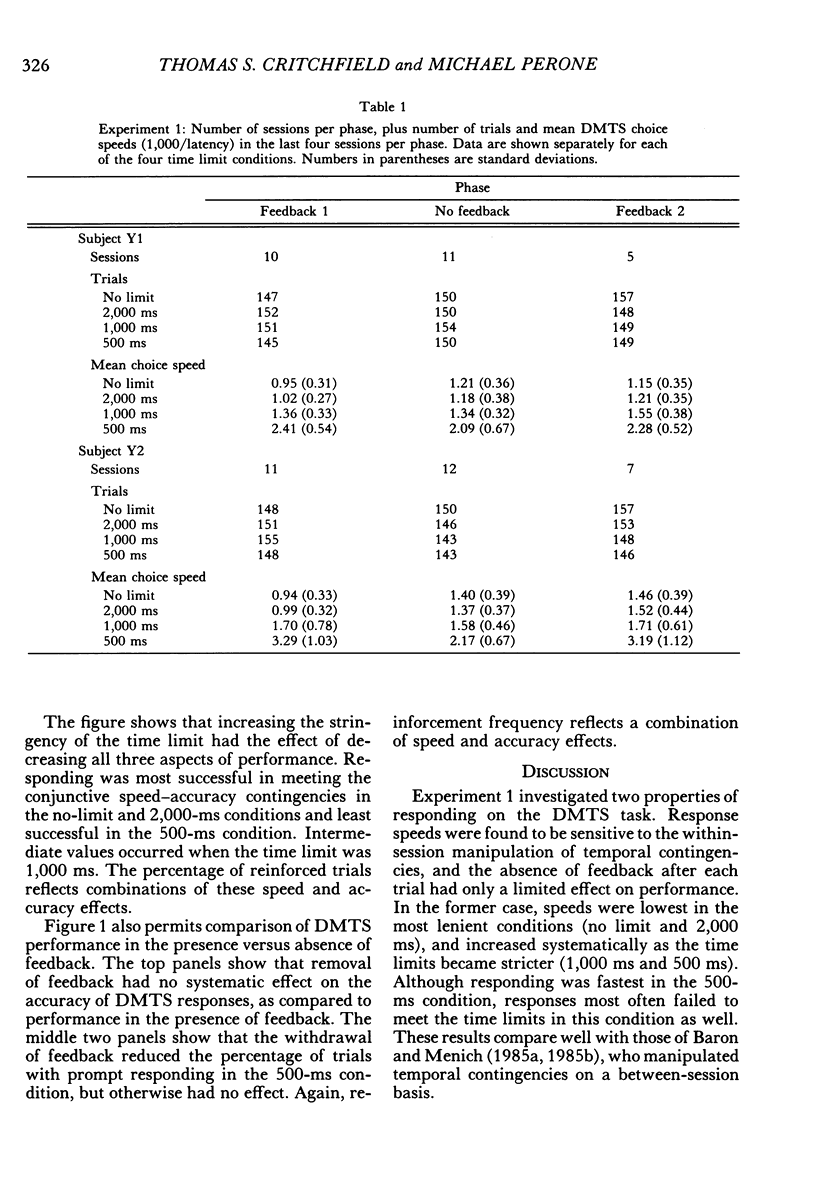

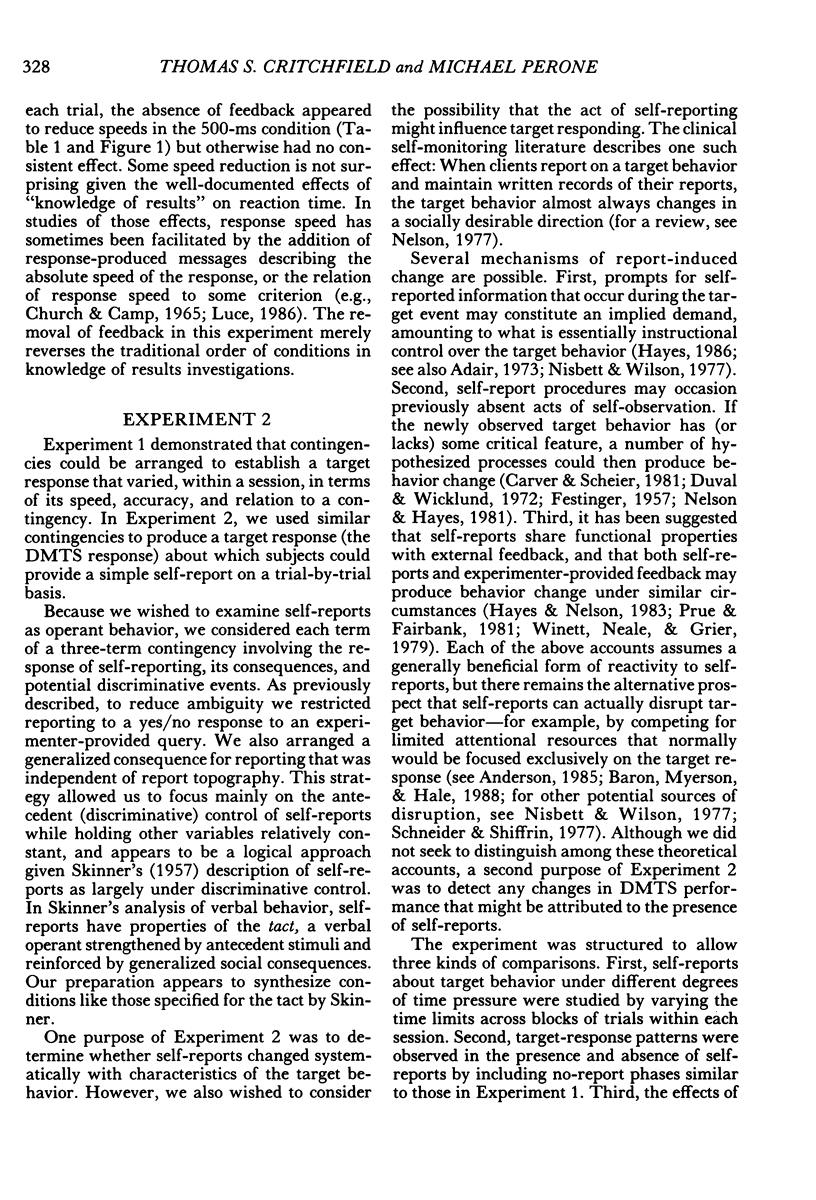

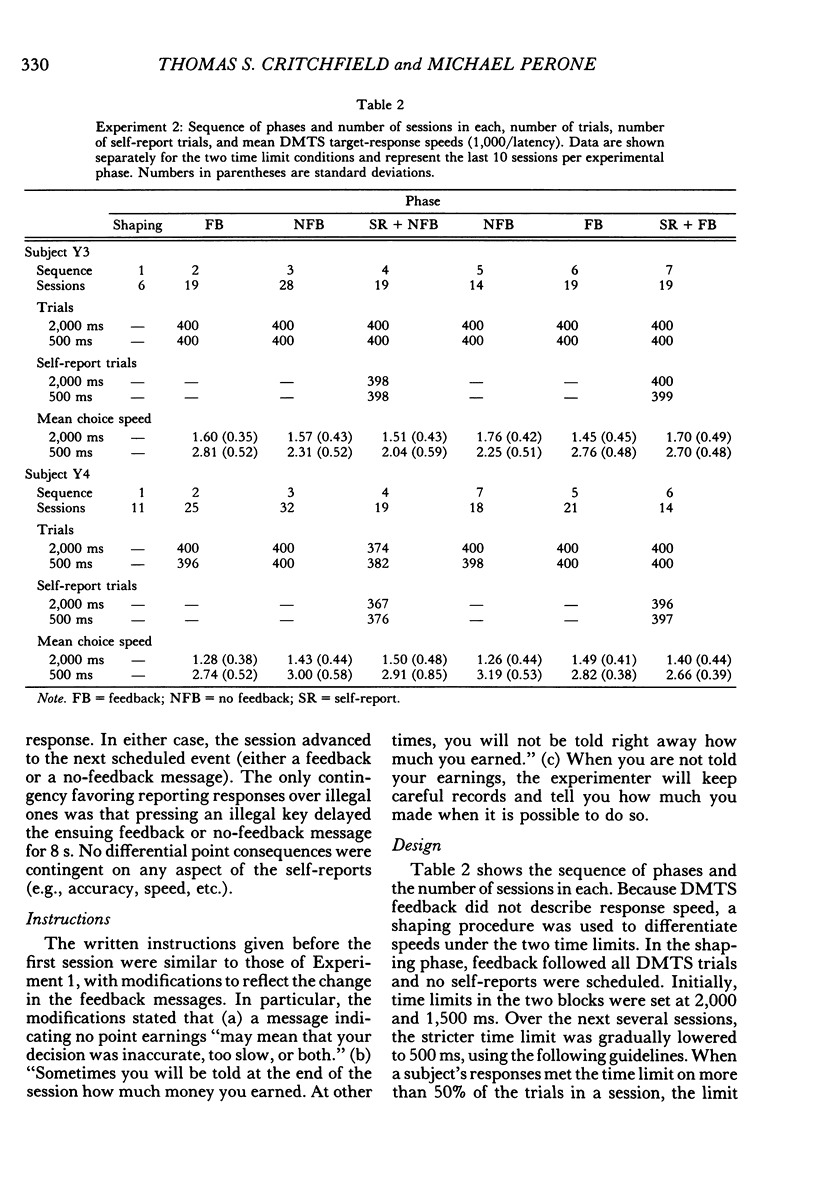
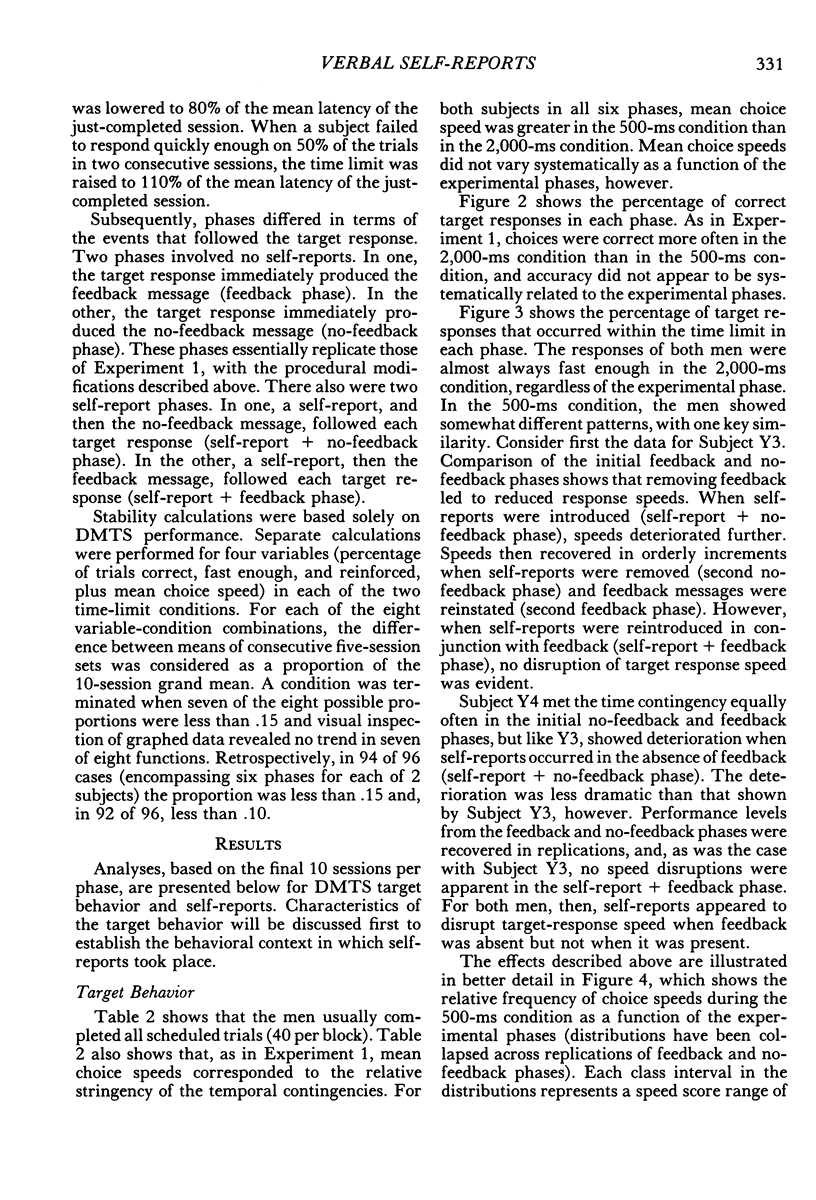

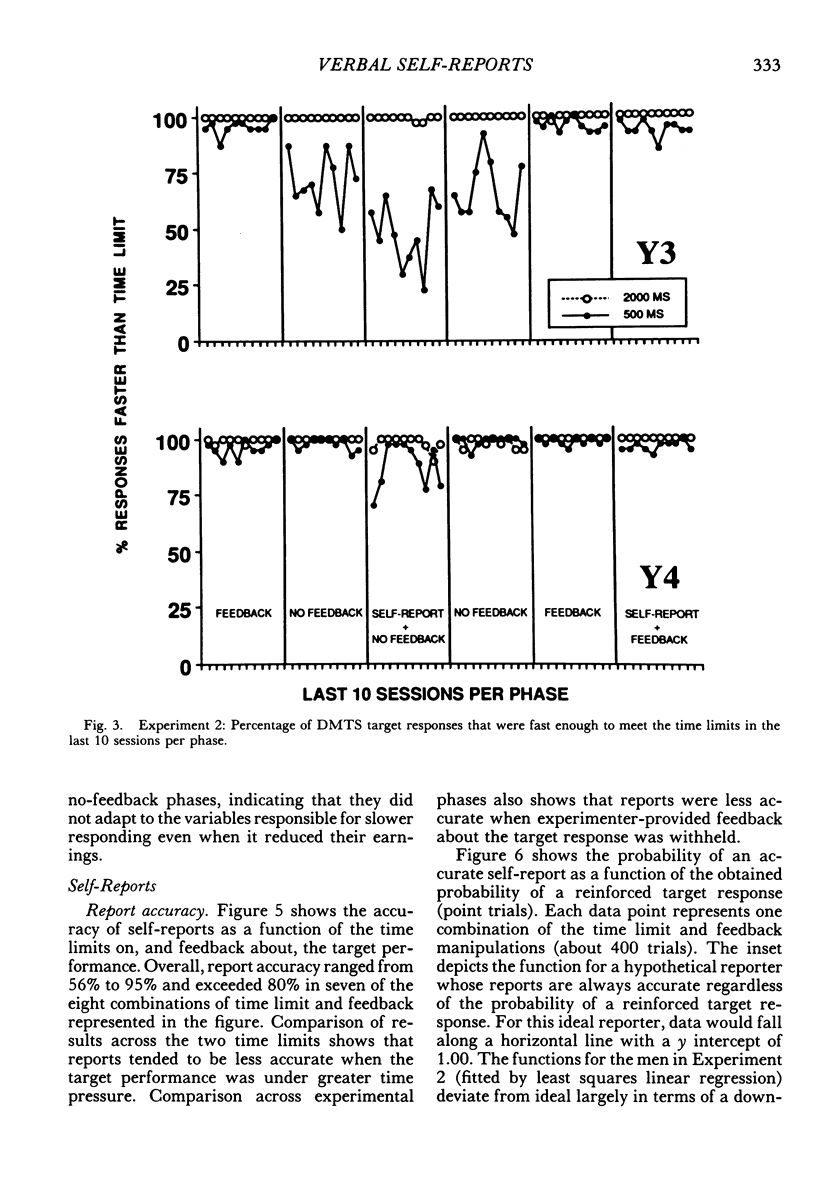

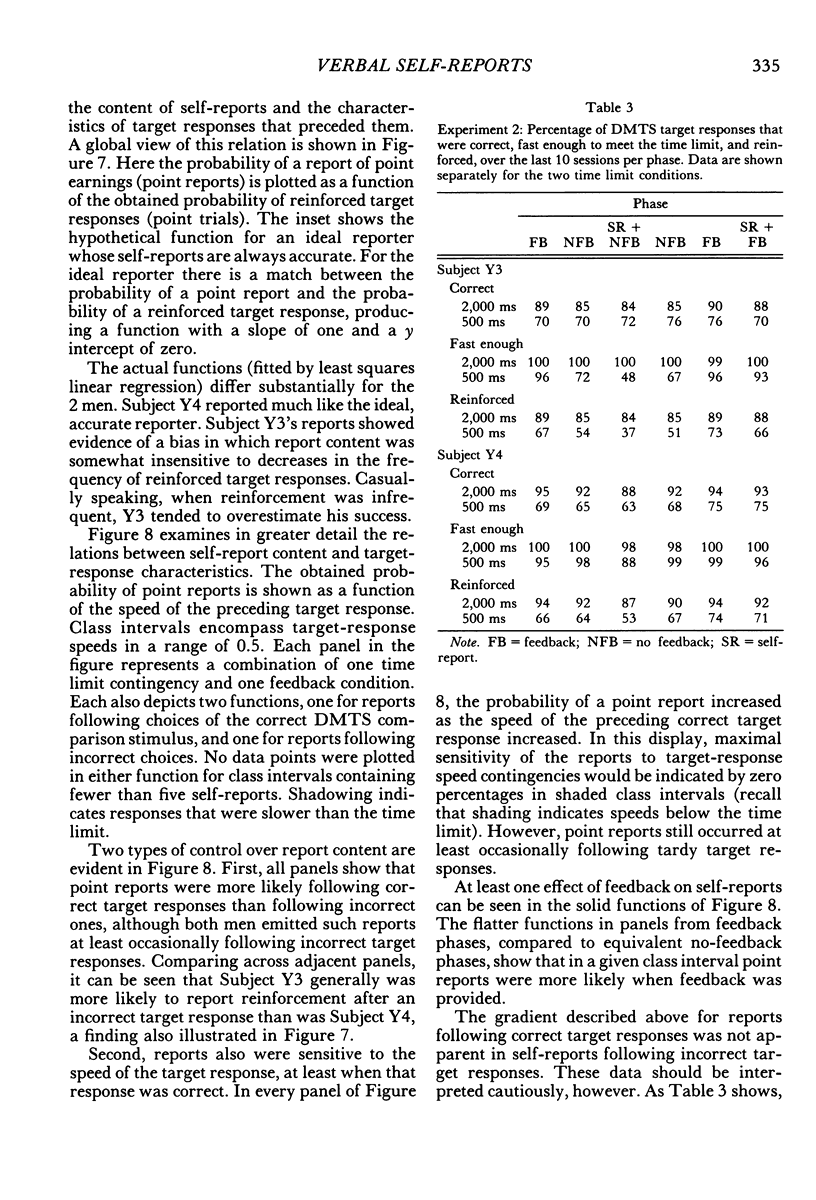
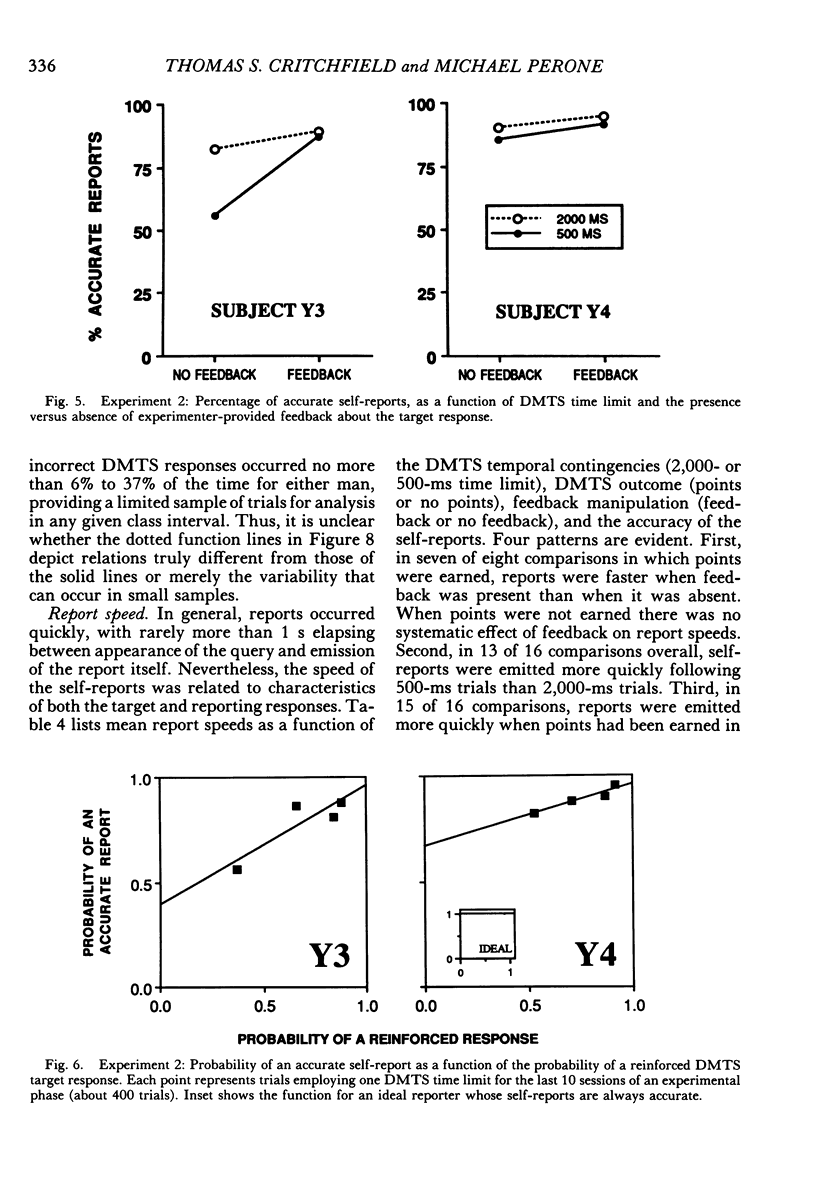
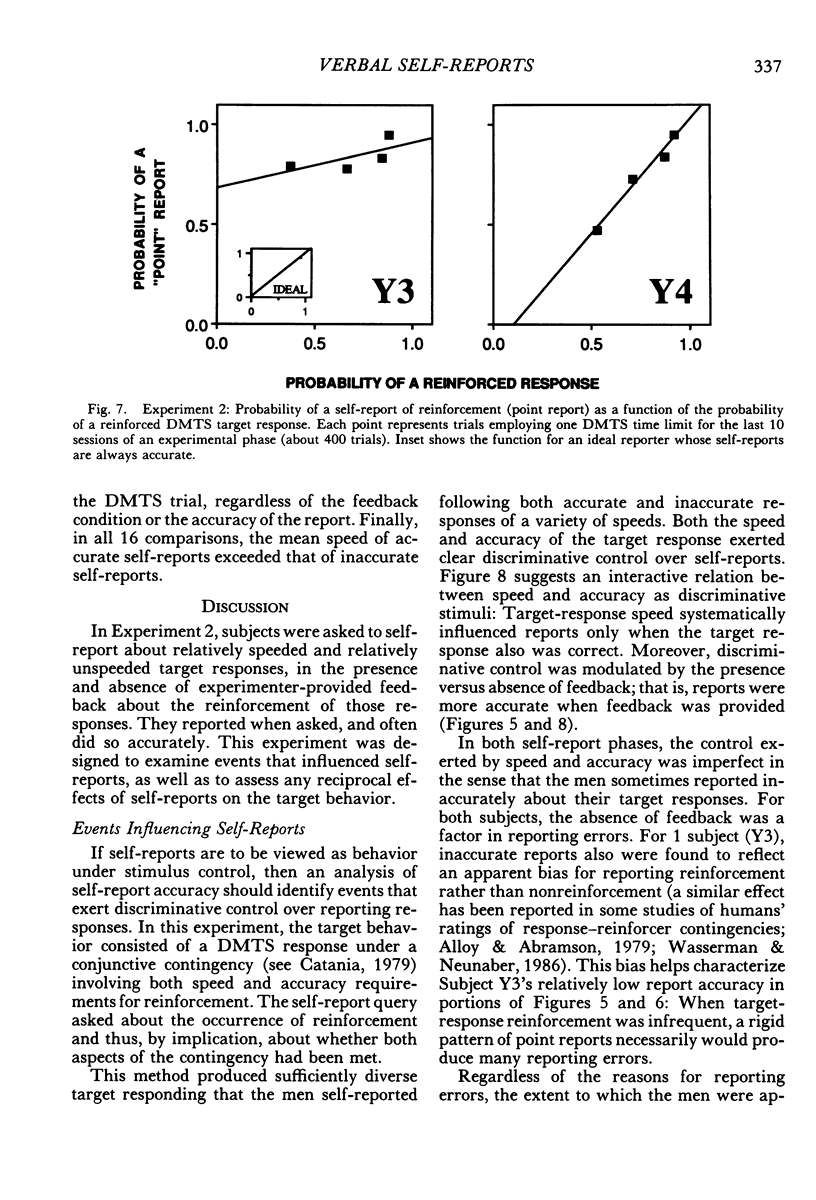

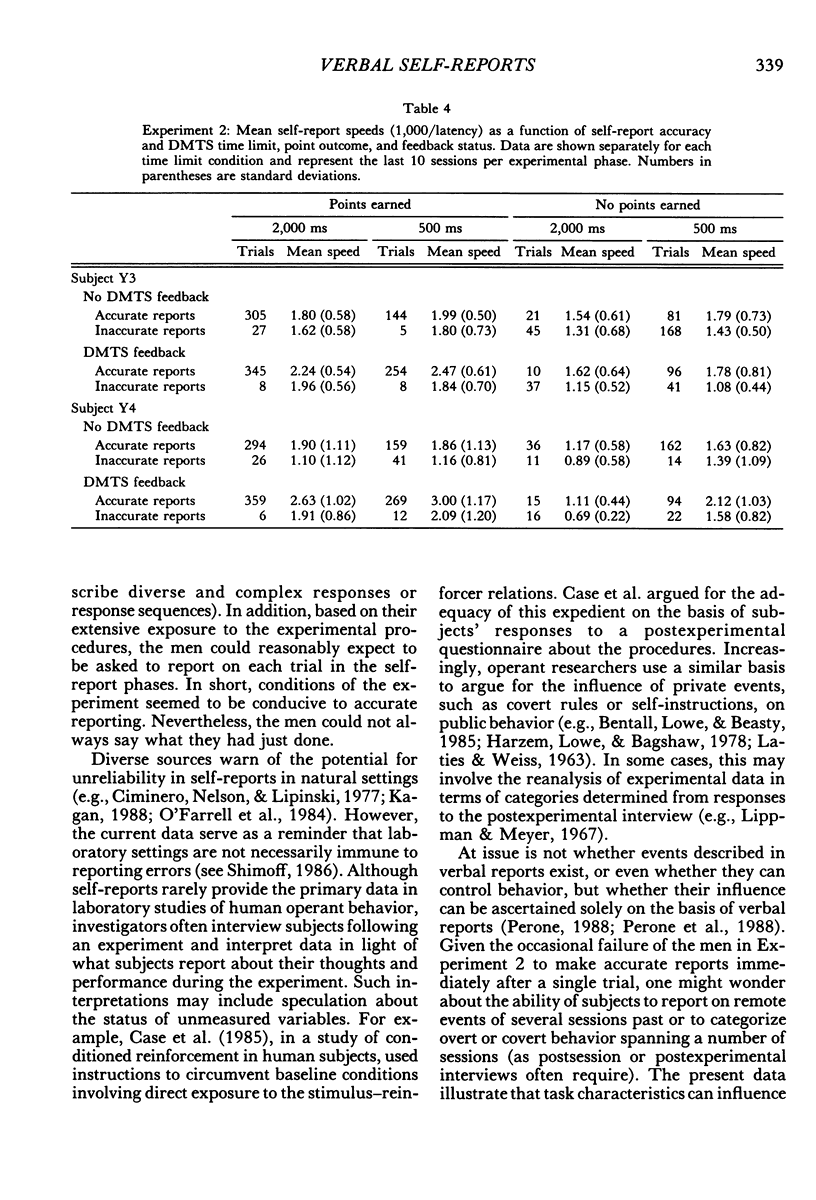
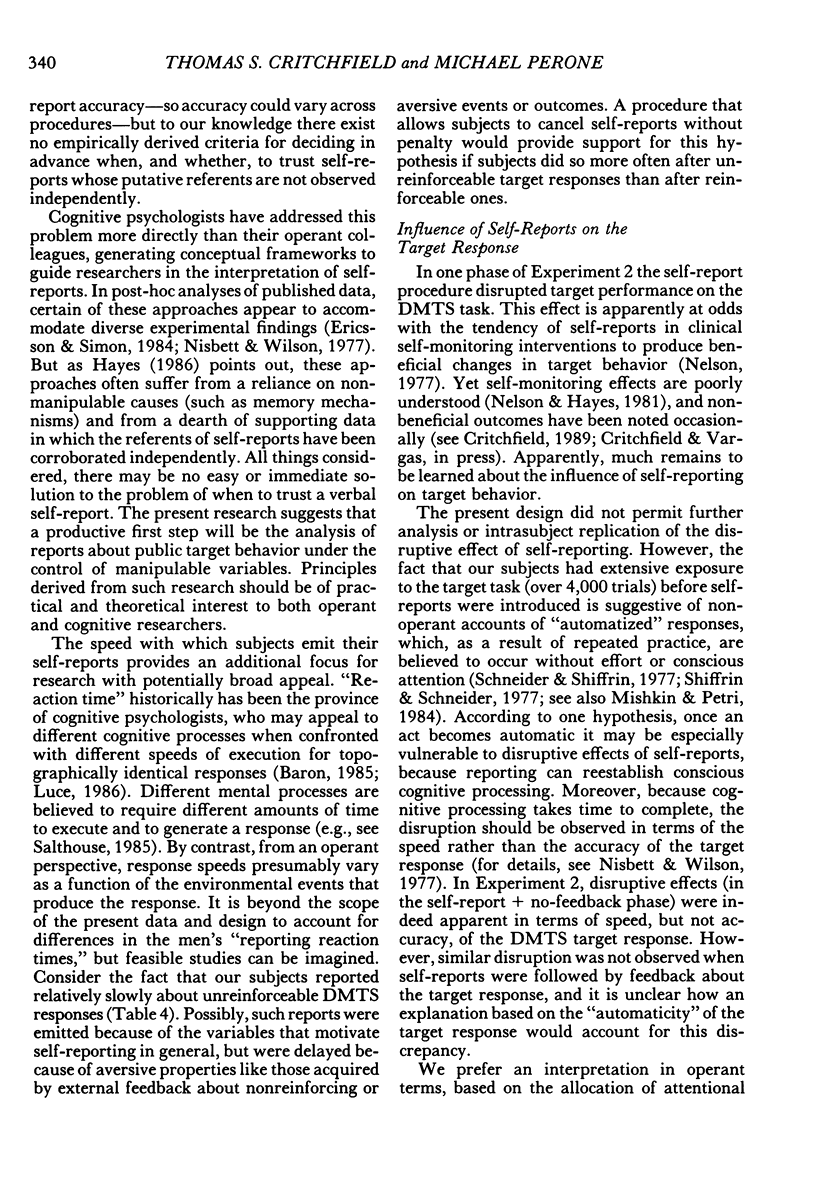
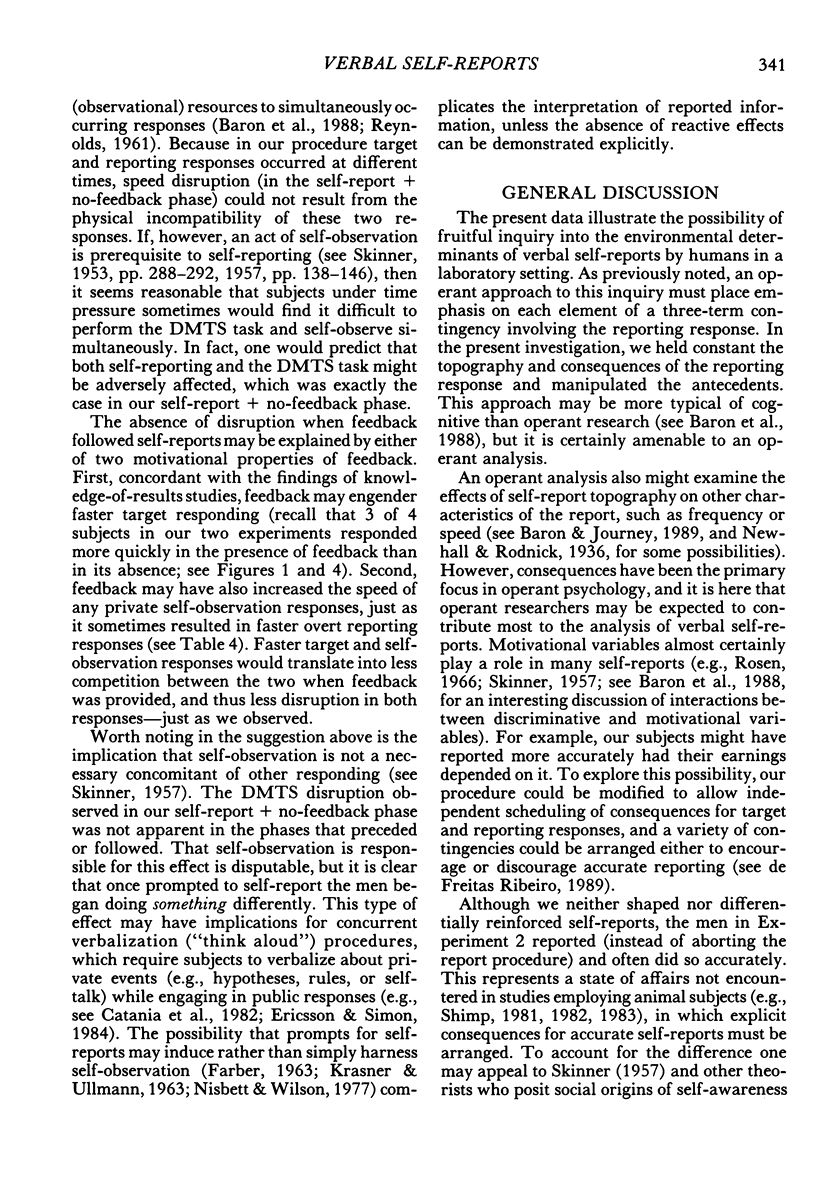
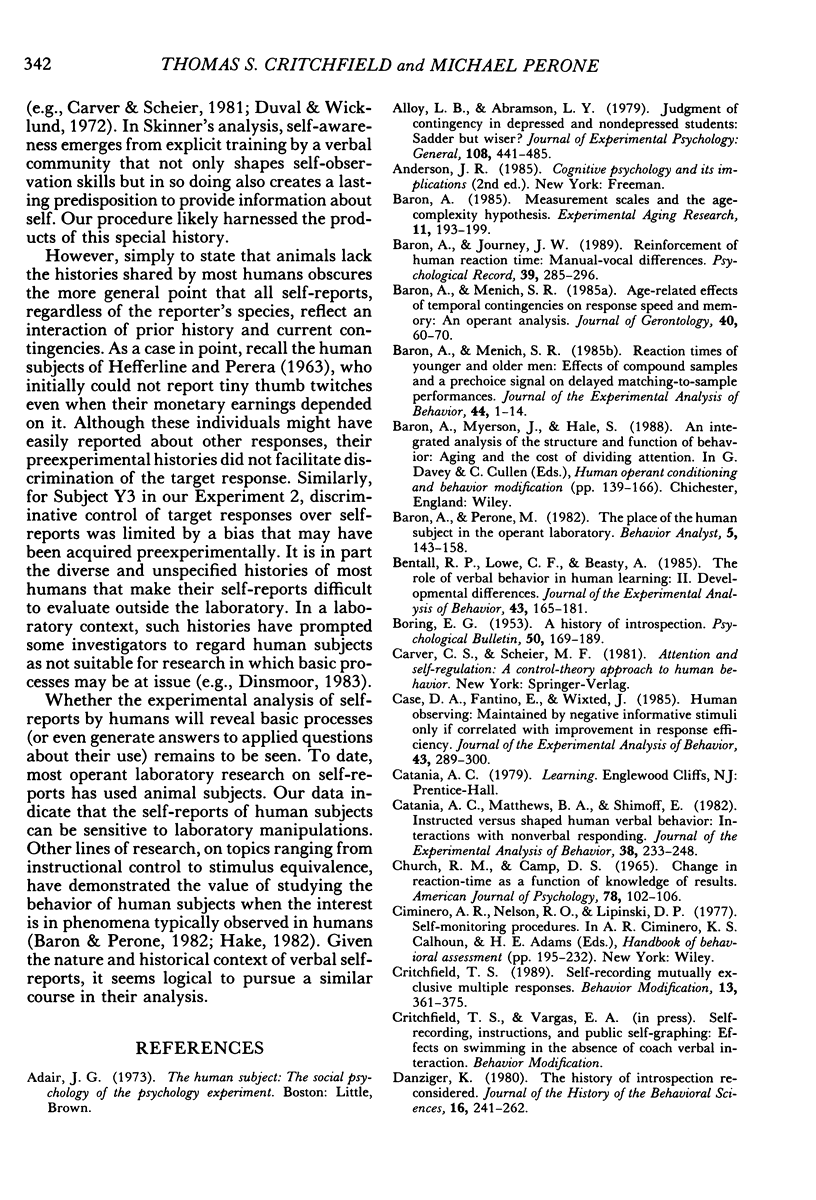
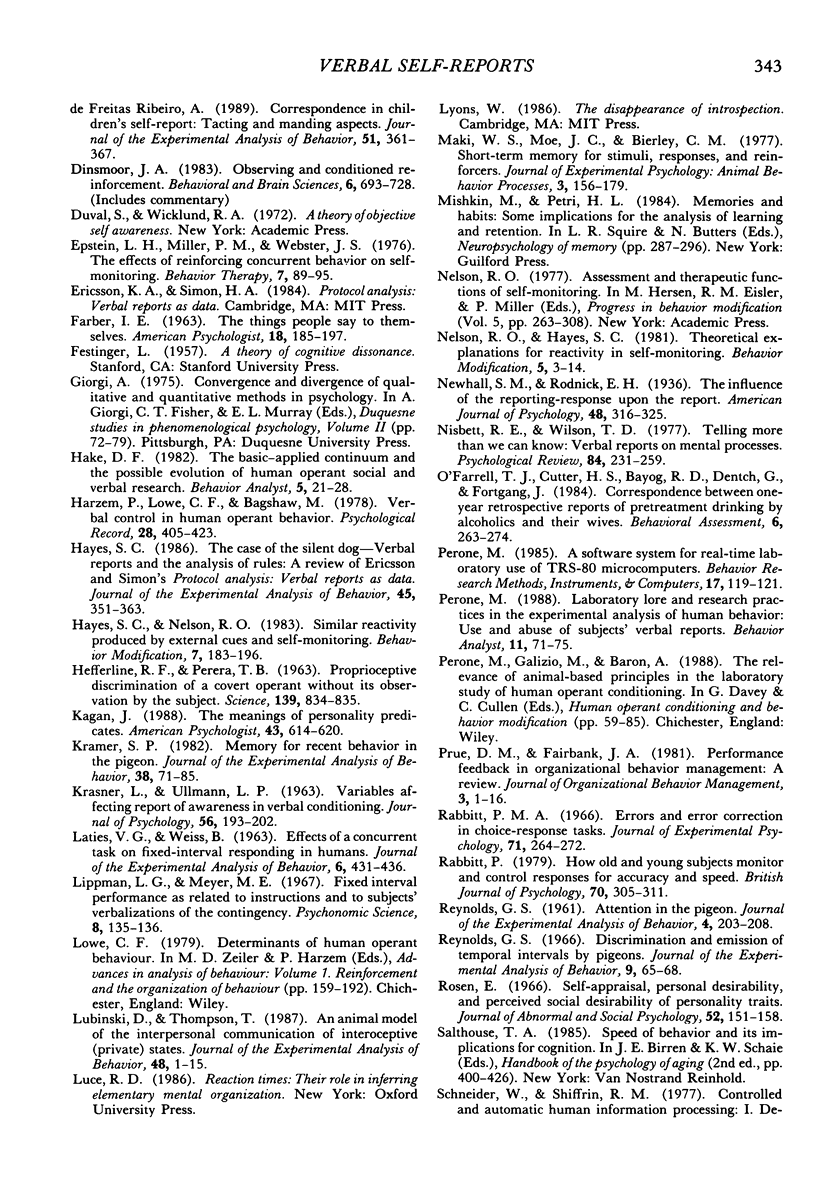

Selected References
These references are in PubMed. This may not be the complete list of references from this article.
- Alloy L. B., Abramson L. Y. Judgment of contingency in depressed and nondepressed students: sadder but wiser? J Exp Psychol Gen. 1979 Dec;108(4):441–485. doi: 10.1037//0096-3445.108.4.441. [DOI] [PubMed] [Google Scholar]
- BORING E. G. A history of introspection. Psychol Bull. 1953 May;50(3):169–189. doi: 10.1037/h0090793. [DOI] [PubMed] [Google Scholar]
- Baron A. Measurement scales and the age-complexity hypothesis. Exp Aging Res. 1985 Autumn-Winter;11(3-4):193–199. doi: 10.1080/03610738508259187. [DOI] [PubMed] [Google Scholar]
- Baron A., Menich S. R. Age-related effects of temporal contingencies on response speed and memory: an operant analysis. J Gerontol. 1985 Jan;40(1):60–70. doi: 10.1093/geronj/40.1.60. [DOI] [PubMed] [Google Scholar]
- Baron A., Menich S. R. Reaction times of younger and older men: effects of compound samples and a prechoice signal on delayed matching-to-sample performances. J Exp Anal Behav. 1985 Jul;44(1):1–14. doi: 10.1901/jeab.1985.44-1. [DOI] [PMC free article] [PubMed] [Google Scholar]
- Bentall R. P., Lowe C. F., Beasty A. The role of verbal behavior in human learning: II. Developmental differences. J Exp Anal Behav. 1985 Mar;43(2):165–181. doi: 10.1901/jeab.1985.43-165. [DOI] [PMC free article] [PubMed] [Google Scholar]
- CHURCH R. M., CAMP D. S. CHANGE IN REACTION-TIME AS A FUNCTION OF KNOWLEDGE OF RESULTS. Am J Psychol. 1965 Mar;78:102–106. [PubMed] [Google Scholar]
- Case D. A., Fantino E., Wixted J. Human observing: maintained by negative informative stimuli only if correlated with improvement in response efficiency. J Exp Anal Behav. 1985 May;43(3):289–300. doi: 10.1901/jeab.1985.43-289. [DOI] [PMC free article] [PubMed] [Google Scholar]
- Catania A. C., Matthews B. A., Shimoff E. Instructed versus shaped human verbal behavior: Interactions with nonverbal responding. J Exp Anal Behav. 1982 Nov;38(3):233–248. doi: 10.1901/jeab.1982.38-233. [DOI] [PMC free article] [PubMed] [Google Scholar]
- Danzinger K. The history of introspection reconsidered. J Hist Behav Sci. 1980 Jul;16(3):241–262. doi: 10.1002/1520-6696(198007)16:3<241::aid-jhbs2300160306>3.0.co;2-o. [DOI] [PubMed] [Google Scholar]
- De Freitas Ribeiro A. Correspondence in children's self-report: Tacting and manding aspects. J Exp Anal Behav. 1989 May;51(3):361–367. doi: 10.1901/jeab.1989.51-361. [DOI] [PMC free article] [PubMed] [Google Scholar]
- HEFFERLINE R. F., PERERA T. B. Proprioceptive discrimination of a covert operant without its observation by the subject. Science. 1963 Mar 1;139(3557):834–835. doi: 10.1126/science.139.3557.834. [DOI] [PubMed] [Google Scholar]
- Kagan J. The meanings of personality predicates. Am Psychol. 1988 Aug;43(8):614–620. doi: 10.1037//0003-066x.43.8.614. [DOI] [PubMed] [Google Scholar]
- Kramer S. P. Memory for recent behavior in the pigeon. J Exp Anal Behav. 1982 Jul;38(1):71–85. doi: 10.1901/jeab.1982.38-71. [DOI] [PMC free article] [PubMed] [Google Scholar]
- Laties V. G., Weiss B. Effects of a concurrent task on fixed-interval responding in humans. J Exp Anal Behav. 1963 Jul;6(3):431–436. doi: 10.1901/jeab.1963.6-431. [DOI] [PMC free article] [PubMed] [Google Scholar]
- Lubinski D., Thompson T. An animal model of the interpersonal communication of interoceptive (private) states. J Exp Anal Behav. 1987 Jul;48(1):1–15. doi: 10.1901/jeab.1987.48-1. [DOI] [PMC free article] [PubMed] [Google Scholar]
- doi: 10.1901/jeab.1986.45-351. [DOI] [PMC free article] [Google Scholar]
- REYNOLDS G. S. Attention in the pigeon. J Exp Anal Behav. 1961 Jul;4:203–208. doi: 10.1901/jeab.1961.4-203. [DOI] [PMC free article] [PubMed] [Google Scholar]
- ROSEN E. Self-appraisal, personal desirability, and perceived social desirability of personality traits. J Abnorm Psychol. 1956 Mar;52(2):151–158. doi: 10.1037/h0046019. [DOI] [PubMed] [Google Scholar]
- Rabbitt P. M. Errors and error correction in choice-response tasks. J Exp Psychol. 1966 Feb;71(2):264–272. doi: 10.1037/h0022853. [DOI] [PubMed] [Google Scholar]
- Reynolds G. S. Discrimination and emission of temporal intervals by pigeons. J Exp Anal Behav. 1966 Jan;9(1):65–68. doi: 10.1901/jeab.1966.9-65. [DOI] [PMC free article] [PubMed] [Google Scholar]
- Shimp C. P. The local organization of behavior: discrimination of and memory for simple behavioral patterns. J Exp Anal Behav. 1981 Nov;36(3):303–315. doi: 10.1901/jeab.1981.36-303. [DOI] [PMC free article] [PubMed] [Google Scholar]
- Shimp C. P. The local organization of behavior: dissociations between a pigeon's behavior and self-reports of that behavior. J Exp Anal Behav. 1983 Jan;39(1):61–68. doi: 10.1901/jeab.1983.39-61. [DOI] [PMC free article] [PubMed] [Google Scholar]
- Wasserman E. A., Neunaber D. J. College students' responding to and rating of contingency relations: The role of temporal contiguity. J Exp Anal Behav. 1986 Jul;46(1):15–35. doi: 10.1901/jeab.1986.46-15. [DOI] [PMC free article] [PubMed] [Google Scholar]
- Winett R. A., Neale M. S., Grier H. C. Effects of self-monitoring and feedback on residential electricity consumption. J Appl Behav Anal. 1979 Summer;12(2):173–184. doi: 10.1901/jaba.1979.12-173. [DOI] [PMC free article] [PubMed] [Google Scholar]


